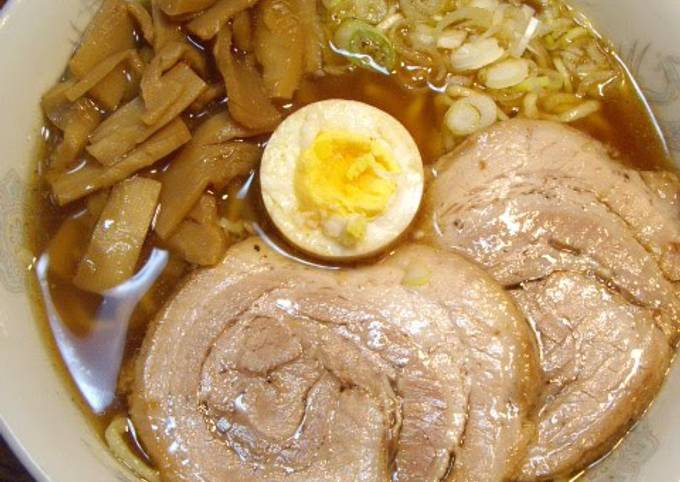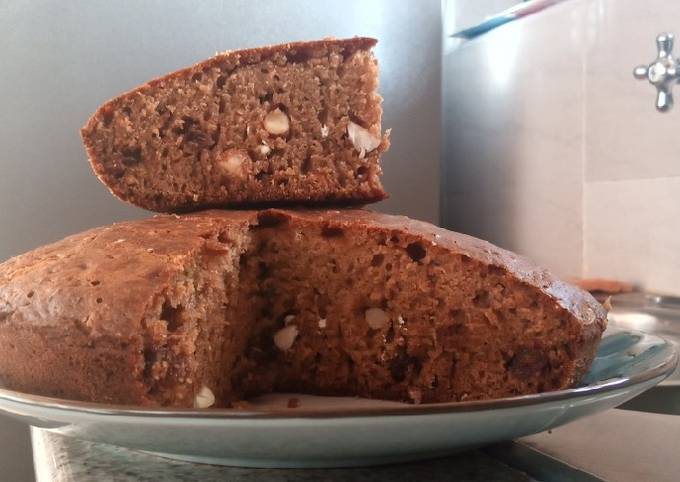
Hey everyone, it’s John, welcome to our recipe page. Today, I’m gonna show you how to prepare a special dish, saitama-inspired ramen noodles. One of my favorites. For mine, I am going to make it a bit tasty. This is gonna smell and look delicious.
Let's start making it the day before you want to eat. Preparations: Mix the Japanese-style base together. Today.we are going to make an Asian inspired Shrimp Ramen noodle soup that is simply delicious and it's great when you need a. Transform ramen noodles into an impressive, make ahead-friendly meal with flavorful marinated steak and veggies.
Saitama-Inspired Ramen Noodles is one of the most well liked of current trending foods in the world. It is enjoyed by millions every day. It’s simple, it’s quick, it tastes yummy. They are fine and they look fantastic. Saitama-Inspired Ramen Noodles is something which I have loved my entire life.
To begin with this recipe, we have to prepare a few components. You can have saitama-inspired ramen noodles using 53 ingredients and 30 steps. Here is how you can achieve that.
The ingredients needed to make Saitama-Inspired Ramen Noodles:
- Make ready The soup
- Prepare 2 bones Pork on the bone
- Prepare 1 Pig feet
- Make ready 1 bird Chicken carcass
- Take 1 3/10 kg Pork belly roast (for making char siu)
- Get 1/2 of each Onions, carrots, potatoes
- Prepare 1/8 Cabbage
- Make ready 2 The green portion of Japanese leeks
- Make ready 2 small Figs
- Prepare 3 pieces Ginger
- Get 1 whole Garlic
- Prepare 1 Chili pepper
- Make ready Japanese-style soup base
- Get 2 1/2 liter ○Water
- Get 6 sheets ○ Kombu (about 10 cm)
- Make ready 50 grams ○Dried sardines
- Make ready 2 ○Dried shiitake mushrooms
- Make ready 1 bunch Assorted thickly cut bonito flakes
- Take Chashu Sauce
- Make ready 1000 ml Water
- Prepare 500 ml Soy sauce
- Get 200 ml Sake
- Prepare 50 ml Mirin
- Prepare 110 grams Sugar
- Make ready 2 cloves/pieces of each Ginger, garlic
- Prepare 2 ※Chicken breast meat, if preferred
- Get Soy Sauce Dressing
- Make ready 300 ml The broth from ○
- Get 1 piece of each The konbu and dried shiitake mushrooms from ○
- Prepare 100 ml Sake
- Make ready 1 tbsp Mirin
- Prepare 30 grams Dried sardines
- Get 80 grams Assorted thickly cut bonito flakes
- Make ready 500 ml Soy sauce
- Get 1 tbsp Salt
- Make ready 10 grams Bonito flakes
- Take 150 ml Char siu broth
- Get Noodles
- Get 1 kg Bread (strong) flour
- Make ready 500 grams Cake flour
- Prepare 23 grams Salt
- Get 580 grams Eggs (11~12 if using medium)
- Get 90 grams Butter
- Make ready Menma
- Make ready 1 kg Boiled bamboo shoots
- Prepare 2 tbsp Sesame oil
- Take 1 Red chili pepper
- Get 4 tbsp Mirin
- Make ready 2 tbsp Sake
- Make ready 6 tbsp Soy sauce dressing
- Prepare 4 tbsp Char siu broth
- Take Others
- Prepare 1 Seasoned eggs, Japanese leeks, nori seaweed, etc.
Ramen Burger buns made with Lotus Foods Organic Millet and. Korean Ramen is loved all around the world and with so many brands, we narrowed it down to the Like many other spicy instant noodles, Neoguri ramen is best enjoyed in the cold weather of winter to warm yourself up. This ramen is inspired by Shin ramyun, the best selling ramyeon in Korea, but it. In America, most of us hear "instant ramen" and picture Nissin Cup Noodles, the textbook definition of non-perishable food in the form of a flour-and-salt But instant ramen has grown into a surprisingly sophisticated market in the last few decades, especially when you dig into the spicy variants that exist.
Instructions to make Saitama-Inspired Ramen Noodles:
- Ingredient Introduction: These are the kombu seaweed sheets and assorted fish flakes that I use. I bought them at the supermarket I work at.
- I also bought this at work. 400 yen is cheap for 1 kg!
- This ramen takes 2 days to complete. Let's start making it the day before you want to eat.
- Preparations: Mix the ○ Japanese-style base together. Let it sit overnight. (Place into the fridge in summer).
- Preparation: Wash off the blood from the pork and chicken bones in running water, and break the pork bones in half at the joint.
- Preparation: Hold the pigs feet with a pair of tongs, burn the hairs over gas flame, and wash well with water.
- Preparation: Roll the meat up from the thick end, and tightly tie with kitchen twine. Roll the ※ breast meat in the same manner.
- Preparation: Wash the vegetables, and cut into approximate sizes. Caution: Do not remove the skins.
- Make the soup: Place the pork bones into a 7~10 liter pot with lots of water, and boil over strong heat. Skim off the scum.
- Add chicken bones, pork belly, and pigs feet once there is no more scum, and continue boiling over medium heat while continuing to remove the scum.
- Add everything from the onions to the red peppers, boil for 2 hours, and turn off the heat.
- Char siu: Remove the pork belly out of the soup, and boil together with the breast meat for 2 hours in the cha siu sauce. See ID: 911531 for details.
- Making the noodle dough: Refer to, and chill in the fridge overnight. https://cookpad.com/us/recipes/155377-soy-sauce-broth-ramen (see recipe)
- Day 2 starts from this point onwards. First, turn the heat onto the soup pot.
- Making the Soy Sauce Dressing: Set aside the amount indicated into a pot from Step 4 that was left to sit overnight in the fridge, and make the soy sauce dressing while referring to. https://cookpad.com/us/recipes/155377-soy-sauce-broth-ramen (see recipe)
- Make the soup: After bringing to a boil, leave in the pork bones, pigs feet and chicken bones, and remove the mushy vegetables from the soup.
- Add the Japanese-style base mixture (all of the broth, konbu seaweed and shiitake mushrooms) from Step 4 into the soup, and boil over a low heat for 2 hours. The soup is now done.
- Making the Noodles: Usingas a reference, divide the dough into 10 equal portions. Make the noodles in a pasta machine 1.7~2 mm thick, and 2 mm wide. Chill in the fridge. https://cookpad.com/us/recipes/155377-soy-sauce-broth-ramen (see recipe)
- Making the bamboo shoots: Bring water to a boil in a frying pan, quickly boil the boiled bamboo shoots in water, and strain.
- Lightly saute the bamboo shoots and red pepper in a frying pan heated with sesame oil, add the flavoring, and saute until there are about 2 tablespoons of broth remaining. Transfer to a bowl and place into the fridge.
- Finishing steps: Decide on the combination of soup and soy sauce dressing. Use roughly 360~400 ml of soup: 35~50 ml of soy sauce dressing. Adjust to suite your tastes.
- Cut the well-chilled chashu into your desired thickness. Thinly cut the Japanese leek. Please refer tofor the marinated eggs. https://cookpad.com/us/recipes/155377-soy-sauce-broth-ramen (see recipe)
- Finishing Touch: Add hot water to a bowl to warm it up. Boil lots of water in a large pot, and boil the noodles for 4-5 minutes.
- Heat the bowl while the noodles are boiling, add the soy sauce dressing, and soup while using a sieve to strain. Add the thinly sliced noodles, top with the ingredients, and it is done!
- To put it simply, these noodles have the opposite texture of being chewy. They are more springy with a toothsome texture.
- Extra 1: Throwing out the soy sauce and soup broth is wasteful! So, use it to make tsukudani that goes well with rice.
- Cut the konb seaweed into thin strips, and shred the rest in a food processor.
- Saute together with 3 tablespoons each of sake and sugar and 1 tablespoon of mirin until the broth evaporates, add 1~2 tablespoons of white sesame for the finishing touch, and it is done.
- Place into a Tupperware container, and store in the fridge. This tastes the best mixed with rice.
- Extra 2: If you have a dog or cat at home, mixing the vegetables (aside from the onions and leeks) with a bit of the chicken bone and meat etc. into their food will make them really happy.
- Ready to serve and ENJOY!
This ramen is inspired by Shin ramyun, the best selling ramyeon in Korea, but it. In America, most of us hear "instant ramen" and picture Nissin Cup Noodles, the textbook definition of non-perishable food in the form of a flour-and-salt But instant ramen has grown into a surprisingly sophisticated market in the last few decades, especially when you dig into the spicy variants that exist. Ramen noodles aren't really ramen without this alkaline salt of some sort. Kansui is what normally provides this, but it's difficult to find (even in Japan for the home cook). Baking soda is the starting point by which one makes baked soda, which I used in this recipe!
So that is going to wrap this up for this exceptional food saitama-inspired ramen noodles recipe. Thank you very much for your time. I am sure that you will make this at home. There is gonna be more interesting food at home recipes coming up. Don’t forget to bookmark this page on your browser, and share it to your loved ones, colleague and friends. Thank you for reading. Go on get cooking!

